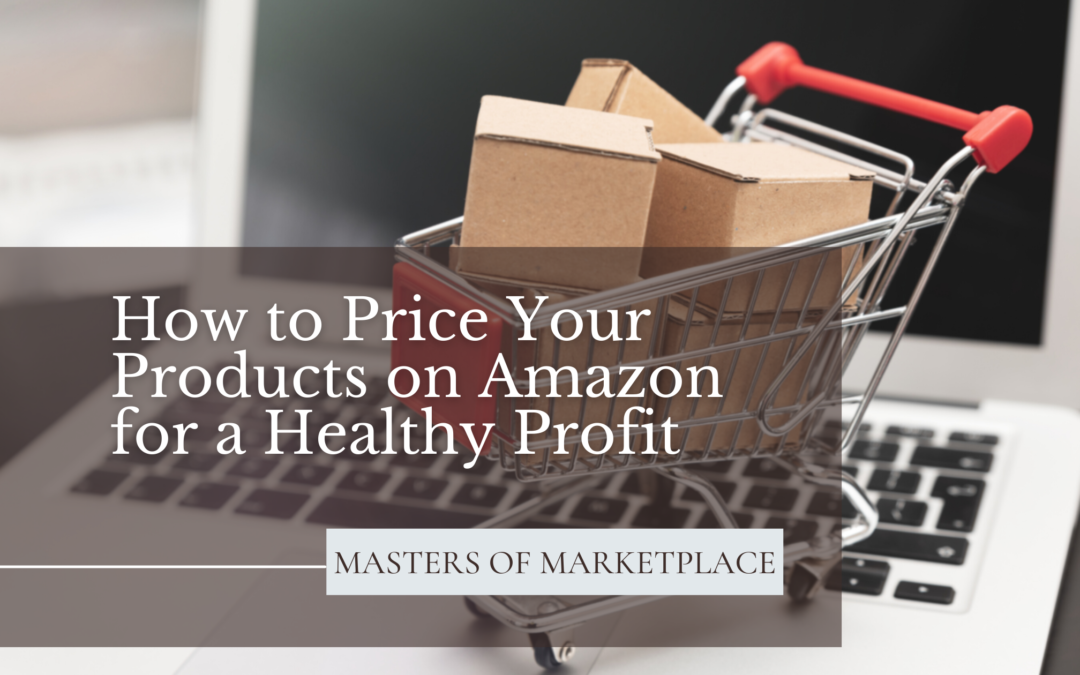Launching your brand on Amazon can be confusing, especially understanding all the fees that Amazon has in place for their third party sellers.
So how do you calculate your product profit margins on Amazon?
Learn how to do just that in this quick tutorial that breaks down Amazon’s fees and how you can input your own product costs and fees using our pricing spreadsheet.
Watch the video to learn How to Price Your Products on Amazon for a Healthy Profit.
HOW TO PRICE YOUR PRODUCTS ON AMAZON FOR A HEALTHY PROFIT
When launching your brand on Amazon, one of the most important things you need to do is figure out your product profit margin. Becoming a seller on the Amazon marketplace comes with several fees from Amazon and you’ll need to take into account these fees, along with your other costs, when calculating your profit margin. Using our free pricing spreadsheet, you’ll be able to input your own product costs and fees to determine where your retail price needs to be in order to make a healthy profit.
WHAT IS A GOOD PROFIT MARGIN?
Determining what is a good profit margin really depends on what kind of product you are selling. If you’re offering a unique product that no one else is selling, a lower margin would be acceptable. If you’re in a category with a lot of competition, you’re going to want a much higher profit margin.
A safe middle ground would be a 25-35% profit margin that will hopefully leave you with a little bit of leftover money to put towards marketing and advertising your product.
USING THE PRICING SPREADSHEET
Once you’ve downloaded the spreadsheet, you’ll notice several categories along the top where you’ll input information relative to your specific product. We’ve also included links to a few very good resources offered on Amazon’s site. Let’s break down what these categories are and where you can find the information you’ll need.

- Product Name/URL
- This, of course, is the name of your product and you can add a link to your product, if you have one.
- Cost
- This is the amount that it will cost to manufacture each of your products. Also known as Cost of Goods Sold or COGS
- Price
- This is the retail price that you intend to charge for your product. You’ll want to keep your price competitive – price too low and you won’t make a profit, price too high and you’ll lose sales to your competitors.
- Amazon Fee
- Amazon charges a referral fee for each item sold and it is a percentage of the total sales price. The percentage varies depending on the category your product falls under. You can find a chart of these percentages under the Fee Schedule link in the spreadsheet.
- Shipping to Amazon Estimate
- This only applies to products you have in FBA (Fulfillment by Amazon). You will need to estimate how much it will cost to ship your products to the Amazon warehouse.
- Marketing Percentage and Marketing Cost
- You can determine what percentage of your revenue you want to dedicate to marketing, promotions, and the occasional discount.
- Fulfillment Fee
- This fee is charged on products you are shipping through FBA. The amount varies depending on your product’s category, size and weight. You can learn more about these fees in the Fee Structure link on the spreadsheet. If you’re fulfilling your own orders or using a third party shipper (FBM), you’ll need to factor in those shipping and handling costs.
- FBA or FBM
- This is where you can input whether you are going to have your inventory in FBA (Fulfilled by Amazon) or FBM (Fulfilled by Merchant). The fees will vary for each. You can have inventory in both, which we highly recommend, so it can be good to compare costs for both to figure out which is more profitable for you.
- Profit and Profit Margin Percentage
- And now finally your estimated profit. Your profit will be your retail price minus your expenses. To determine the profit margin percentage, we divide the profit by the retail price and then multiply that amount by 100.
Profit Margin (%) = (Profit ÷ Retail price) × 100
OTHER THINGS TO CONSIDER
We want to mention that this is not an exhaustive list of fees you can/will incur while selling on Amazon. These are the most important fees you’ll need to factor into your profit margin and they are fees every seller will have, no matter what.
That said, it can only be to your advantage to utilize the links that we’ve provided to get the best idea of what your costs will be and how to get to that healthy profit margin. The Fulfilled by Amazon Revenue Calculator is a great tool that will allow you to calculate your estimated revenue by comparing products similar to yours that are already being sold on Amazon.
NEED A LITTLE EXTRA HELP?
At Masters of Marketplace, we have really great resources for small businesses who are ready to start selling their products on Amazon. If you’re looking for a little more guidance, you can visit http://www.mastersofmarketplace.com/Sellonamazon where we’ll take you through the 4 qualifiers to determine if your business is right for Amazon and a 7 step roadmap for launching your brand on the marketplace.
Learn More
If you’d like to learn more about selling on Amazon or offering it as a service to others, you can subscribe to my YouTube channel to see the videos I post each week.
I’d also love to see you in the Masters of Marketplace Member Site where we discuss all things Amazon all day long!

